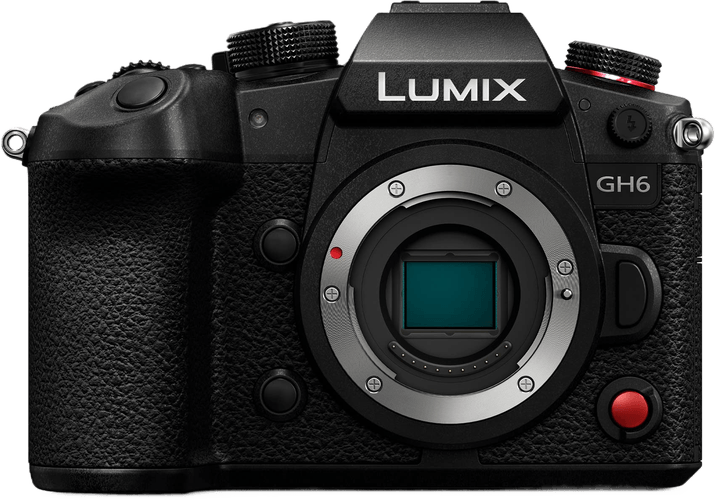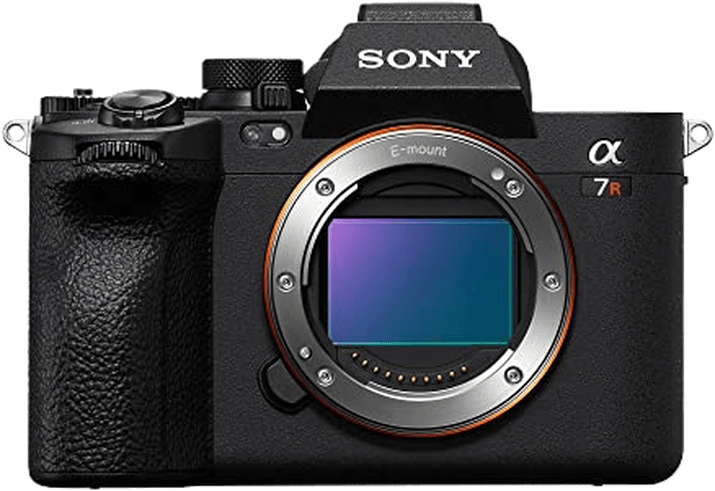Panasonic Lumix DC-GH6 vs Sony a7R V Comparison
Panasonic Lumix DC-GH6

Sony a7R V

The Sony a7R V outperforms the Panasonic Lumix DC-GH6 with a score of 85/100 compared to 73/100. Both cameras are mirrorless and were released in 2022, sharing similarities in their general specifications. However, the a7R V has a higher launch price of $3999, while the GH6 is priced at $2199.
The Sony a7R V is more compact, measuring 131 x 97 x 82mm and weighing 723g, making it easier to carry around. On the other hand, the GH6 is slightly larger and heavier at 138 x 100 x 100mm and 823g. Despite its size and weight, the GH6 still offers excellent performance for a lower price.
When considering these cameras, the Sony a7R V stands out for its compact design and superior score. However, the Panasonic GH6 remains a strong contender, especially for those seeking a more budget-friendly option. Ultimately, the choice between these two cameras will depend on individual preferences and priorities.
Panasonic Lumix DC-GH6 vs Sony a7R V Overview and Optics
The Sony a7R V outperforms the Panasonic Lumix DC-GH6 in optics with a score of 85/100 compared to the GH6’s score of 69/100. Both cameras share common specifications, such as CMOS sensor type, image stabilization, and similar processors – the Venus Engine for the GH6 and the Bionz XR for the a7R V.
The Sony a7R V excels with a higher megapixel count of 61, compared to the GH6’s 25 megapixels. This results in more detailed and higher resolution images. Additionally, the a7R V has a larger full-frame sensor, which contributes to better low-light performance and dynamic range. The DXOMARK score for the sensor is also higher at 94, indicating superior image quality. The Sony FE lens mount offers a wide range of lens options, catering to various photography needs.
On the other hand, the Panasonic GH6 has a faster shooting speed of 14 frames per second, compared to the a7R V’s 10 frames per second. This makes it more suitable for capturing fast-moving subjects. The Micro Four Thirds sensor size and Micro 4/3 lens mount provide a compact and lightweight system, which can be advantageous for travel and portability. The 4:3 aspect ratio of the GH6 is also beneficial for certain photography styles, such as portraits and landscapes.
Taking these factors into account, the Sony a7R V is the better camera in terms of optics due to its higher resolution, larger sensor, and better DXOMARK score. However, the Panasonic GH6 offers advantages in shooting speed, portability, and aspect ratio, making it a suitable choice for specific photography needs.
Panasonic Lumix DC-GH6 vs Sony a7R V Video Performance
The Sony a7R V outperforms the Panasonic Lumix DC-GH6 in video capabilities, with a score of 100/100 compared to the GH6’s 96/100. Both cameras share some common specs, such as a maximum video frame rate of 120fps and built-in time-lapse functionality. However, the a7R V offers better video quality due to its higher maximum video resolution and dimensions.
The Sony a7R V boasts an impressive 8K maximum video resolution, with dimensions of 7680 x 4320. This higher resolution provides more detail and clarity in videos, making it an ideal choice for professional videographers and content creators. The Panasonic GH6, on the other hand, has a maximum video resolution of 6K and dimensions of 5760 x 2880. While still offering high-quality video, it falls short when compared to the a7R V’s 8K capabilities.
The Panasonic GH6 does not have any significant advantages over the Sony a7R V in terms of video capabilities. Both cameras offer the same maximum frame rate and time-lapse functionality, making them equal in these aspects. However, the GH6’s lower video resolution and dimensions make it a less desirable option for those prioritizing video quality.
Given the differences in video capabilities, the Sony a7R V is the clear winner between the two cameras. Its 8K maximum video resolution and larger dimensions provide superior video quality, making it a top choice for videographers and filmmakers. While the Panasonic GH6 offers decent video performance, it does not match the a7R V’s capabilities, making the Sony a7R V the better choice for video enthusiasts.
Panasonic Lumix DC-GH6 vs Sony a7R V Features and Benefits
The Sony a7R V emerges as the winner in this comparison, with a feature score of 87/100, while the Panasonic Lumix DC-GH6 scores 83/100. Both cameras share several common specifications, including touchscreen capabilities, flip screens, the absence of GPS, and the presence of WIFI and Bluetooth.
The Sony a7R V outperforms the Panasonic Lumix DC-GH6 in screen size and resolution. With a 3.2-inch screen, the Sony a7R V is slightly larger than the Panasonic Lumix DC-GH6’s 3-inch screen. The Sony a7R V also boasts a higher screen resolution of 2,100,000 dots, compared to the Panasonic Lumix DC-GH6’s 1,240,000 dots. This difference in screen size and resolution provides the Sony a7R V with a more detailed and immersive viewing experience.
The Panasonic Lumix DC-GH6, despite its lower feature score, still offers solid performance and value. Its 3-inch touchscreen and flip screen provide ease of use and versatility, while its WIFI and Bluetooth capabilities allow for seamless connectivity. However, its screen resolution is lower than that of the Sony a7R V, which may impact image quality and user experience.
Taking these factors into account, the Sony a7R V stands out as the better camera due to its superior screen size and resolution, which contribute to its higher feature score. The Panasonic Lumix DC-GH6 remains a strong contender, with its own set of useful features, but falls short in comparison to the Sony a7R V.
Panasonic Lumix DC-GH6 vs Sony a7R V Storage and Battery
The Sony a7R V outperforms the Panasonic Lumix DC-GH6 in storage and battery, scoring 73/100 compared to the GH6’s 68/100. Both cameras have two memory card slots and support USB charging. The GH6 accepts SD (UHS-II compatible) and CFexpress B cards, while the a7R V is compatible with SD/SDHC/SDXC and CFexpress Type A cards.
The a7R V has a longer battery life, providing 530 shots per charge compared to the GH6’s 360 shots. This advantage makes the Sony a7R V more suitable for extended shooting sessions without frequent battery changes. Both cameras use Li-ion battery packs, with the a7R V utilizing the NP-FZ100 model.
Although the Panasonic GH6 has a shorter battery life, it still offers adequate performance for most users. However, the Sony a7R V’s superior battery life and storage capabilities make it the better choice for those prioritizing these aspects.
Panasonic Lumix DC-GH6 vs Sony a7R V Alternatives
If you haven’t decided on a camera just yet, have a look at these camera comparisons too:
